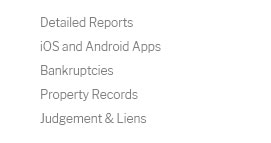 |
 |
|---|
|
|
|---|
 |
 |
 |
 |
|---|---|---|---|
 |
 |
 |
|
 |
|||
 |
 |
 |
|
 |
|||
 |
 |
 |
|
 |
|||

bankruptcy public records explained for borrowers and businessesWhat they are and where they appearBankruptcy public records are official court filings that document a debtor’s case, including the chapter, case number, filing date, schedules, and the final discharge or dismissal. Because they are public, anyone can review them, though access may require registration or fees.
Duration and impactIn the United States, a Chapter 7 can appear on credit reports for up to 10 years, while Chapter 13 typically reports for 7 years. The court record itself does not expire, but its visibility varies by system. Lenders weigh the age of the case, post-filing behavior, and any reaffirmations. Practical tips to make informed decisionsVerify names, dates, and case numbers to avoid mistaken identity. Dispute inaccuracies with the bureau and attach the discharge order. Keep certified copies, monitor updates, and be cautious with data resellers. For counterparties, read the docket, not just headlines.
|
|---|